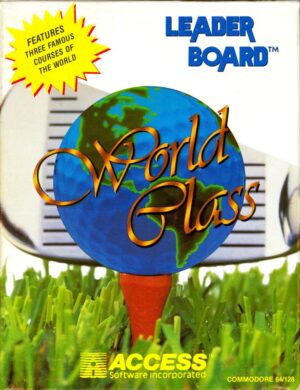Retro Replay Review
Gameplay
From the moment you pick up the sights in Jack Bullett, the game’s core loop hooks you with its lightning-fast crosshair mechanics. You’ll scan the windows of a neon-soaked cityscape for gangsters who pop up at unpredictable intervals, guiding your aim either along the on-screen suggestions or by your own instinct. Each successful headshot earns you points, pushing you to hone your reflexes and improve your reaction time with every new wave.
But it’s not just about pulling the trigger as soon as you see a suspect. Innocent bystanders—strip-club patrons, portly pedestrians, and other noncombatants—wander into view, and hitting any of them carries steep penalties. This layer of risk adds a tightrope element to the shooting gallery format: are you going to wait an extra split-second to be certain of your target, or risk a quick shot to rack up that combo bonus?
Lives are finite and each miss or civilian casualty chips away at your survival meter. If you hesitate too long or shoot the wrong person, a gangster will open fire and you’ll lose one of your precious lives. This balance of aggression and caution sets Jack Bullett apart from more forgiving shooters, as you must constantly weigh speed against accuracy.
The game also tosses in bonus rounds and occasional power-ups—like temporary slow-motion or rapid-fire modes—to mix up the pacing. These sequences not only reward skilled play but also serve as breathers between increasingly chaotic mob-shooting scenarios. Overall, the gameplay loop is tight, urgent, and built for replayability.
Graphics
Jack Bullett presents its nocturnal urban battleground in bold, stylized pixel art that captures the gritty atmosphere of a crime-ridden city at night. The backgrounds brim with glowing signs, silhouetted rooftops, and windows framed by flickering neon lights. It’s a visual feast that breathes life into each building façade, making every shot feel like it’s taking place in a living, breathing underworld.
Characters—both friend and foe—are rendered with enough detail to distinguish a dangerous gangster from a harmless civilian in a single glance. Animations are crisp: enemies flinch and slump convincingly when hit, while innocents react in panic. Even the muzzle flashes and bullet trails add a satisfying tangibility to the act of pulling the trigger.
Special effects such as screen shakes, brief slow-motion triggers, and particle bursts upon a headshot further elevate the visual feedback. These touches not only reward precision but heighten the cinematic tension as you clear building after building. Despite its retro leanings, Jack Bullett feels modern in its presentation and slick execution.
Variations in lighting—from neon-lit exteriors to darker, shadow-cloaked floors—also keep your eyes actively scanning for movement. This interplay of light and shadow is more than an aesthetic choice; it directly informs gameplay by making some targets harder to spot, thus challenging your observational skills on every level.
Story
While Jack Bullett isn’t a narrative-heavy title, it does weave a minimalist story that frames your shoot-’em-up sessions with just enough context to stay invested. You play as Jack, a lone vigilante on a mission to clean up the city’s most corrupt high-rises. Reports of gangster infestations pop up on your screen between levels, hinting at a larger conspiracy driving the mayhem.
Brief cutscenes bookend each chapter, offering glimpses of Jack’s motivations and the shadowy figures orchestrating the chaos from the rooftops. These bite-sized narrative beats keep the focus on gameplay but still reward observant players with tidbits of lore and character hints. It’s a lean approach that doesn’t slow down the action.
The city itself becomes a character of sorts—each district has its own look and roster of hoodlums, from downtown speakeasy thugs to high-rise crime bosses. As you progress, you catch snippets of overheard conversations and newspaper clippings that flesh out Jack’s world. While the story won’t win any awards for depth, it provides just enough motivation to keep your trigger finger itchy for “one more building.”
Ultimately, Jack Bullett’s narrative is an appetizer to the main course of fast-paced shooting. It sets the stage, delivers a few surprises, and then steps back, leaving you free to focus on honing your sharpshooting skills against the criminal underbelly.
Overall Experience
Jack Bullett excels as a pick-up-and-play arcade shooter: its controls are intuitive, the tension is palpable, and the push-for-perfection design will keep you coming back for higher scores. Matches are brisk—usually lasting only a few minutes—but they’re intense enough to feel like mini action epics. Perfect for quick sessions during a commute or late-night gaming spurts.
The combination of high-contrast visuals, pulse-pounding sound effects, and the ever-present threat of losing lives makes each window-to-window encounter a nail-biter. The occasional power-ups and escalating difficulty curve ensure that no two levels feel identical, sustaining a fresh sense of challenge throughout.
The game’s learning curve is smooth: newcomers get comfortable with the crosshair mechanics in the first few stages, while veteran players can chase leaderboard glory by mastering target prioritization and civilian avoidance. For score chasers and twitch-reaction aficionados, Jack Bullett offers deep replay value without ever feeling grindy.
In short, Jack Bullett is a lean, adrenaline-charged shooter that nails the essentials of arcadey gunplay. It may not boast a sprawling narrative or photorealistic graphics, but its precise mechanics, stylish presentation, and heart-racing pacing make it a standout for fans of quick-fire action. If you’re craving a game that tests your reflexes and dares you to stay razor-sharp, Jack Bullett delivers the goods.
 Retro Replay Retro Replay gaming reviews, news, emulation, geek stuff and more!
Retro Replay Retro Replay gaming reviews, news, emulation, geek stuff and more!








Reviews
There are no reviews yet.